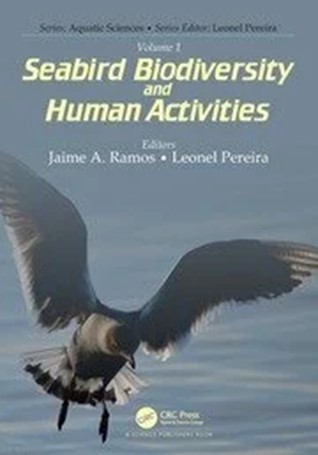
Jaime Ramos and Leonel Pereira have co-edited a book with the title Seabird Biodiversity and Human Activities to be published this month. The book has 15 chapters by different authors. Click on the chapter titles listed below to view their authorships and read their individual abstracts.
ACAP Latest News intends to feature selected chapters of special interest to the Albatross and Petrel Agreement once the book has been published.
The book’s overall abstract follows:
“Seabirds are global travellers connecting oceans and seas all over the world, and facing multiple threats at local and global scales. Seabirds are long-lived top predators, reflecting changes at lower trophic levels, and are good models to assess ecological changes produced by human societies. Thus, world-wide collaborations are needed to understand seabird ecology and to develop effective conservation measures benefitting both humans and seabird populations.
This book provides a modern overview on seabird biodiversity studies: it begins by covering the most up-to-date techniques to study seabirds, and then focus on pragmatic issues related with interactions between seabirds and humans, the use of seabirds as ecological indicators and conservation of seabirds. It gives an updated insight on all these topics and highlights gaps that need further development for a comprehensive understanding of the relationships between seabirds and human actions.
This book covers the response of the seabird research community to a biodiversity crisis aiming to contribute towards environmental sustainability. It should provide inspiration to a wide range of professionals and students, including the much needed world-wide collaboration between research groups and practitioners. In this way seabird research and conservation provide an inspiration for the solution of global issues such as climate change.”
Table of Contents
An Introduction to Seabirds and Their Study
Conventional and Modern Approaches to Study Seabird Trophic Ecology and Diet
A Physiological Toolbox to Explore the Relationships Between Seabirds and Their Changing Environments
Tracking Seabirds for Conservation and Marine Spatial Planning
Seabird and Fisheries Interactions
Urban Gulls with Humans
Seabirds and Marine Renewable Energy Sources
Seabirds and Biotoxins
Seabirds as Indicators of Forage Fish Stocks
Seabirds as Indicators of Oceanographic Changes
Seabirds as Indicators of Metal and Plastic Pollution
Antarctic Seabirds as Indicators of Climate Change
Light Pollution as a Seabirds' Conservation Threat
Eradication and Control of Invasive Mammal Species as a Seabird Conservation Tool
Identifying and Establishing Marine Protected Areas Worldwide
Reference:
Ramos, J.A. & Pereira, L. (Eds) 2022. Seabird Biodiversity and Human Activities. Boca Raton: CRC Press. 270 pp. doi.org/10.1201/9781003047520.
John Cooper, ACAP Information Officer, 02 June 2022

 Español
Español  English
English  Français
Français